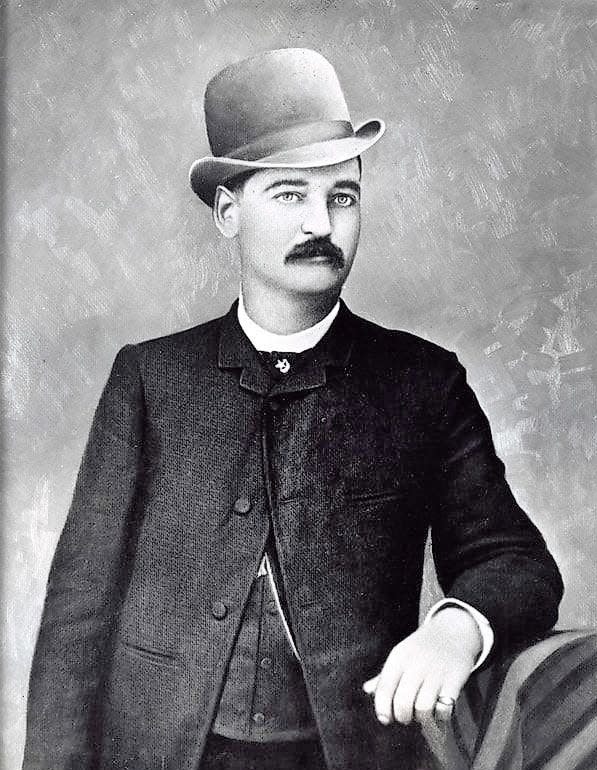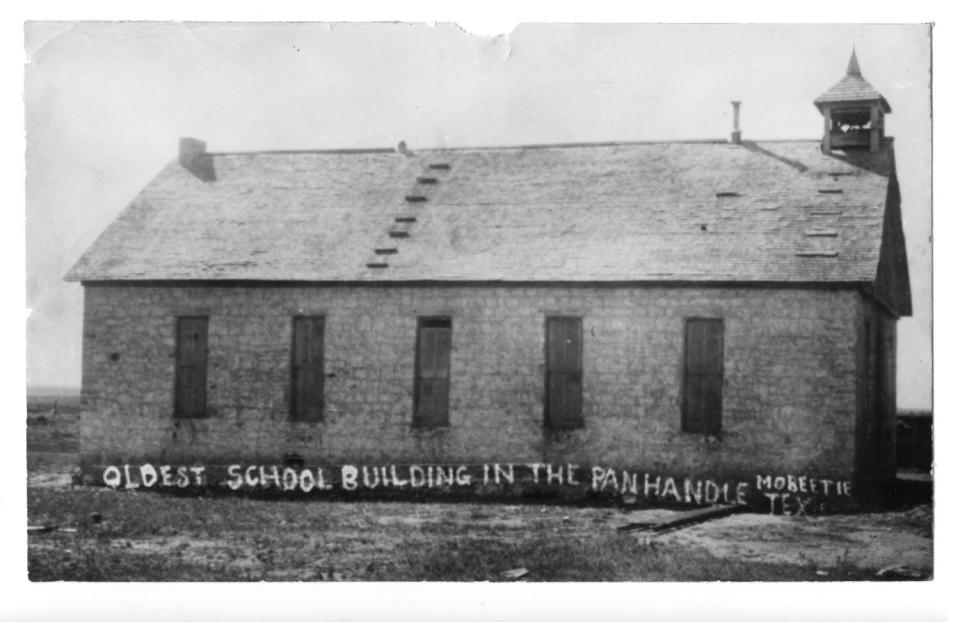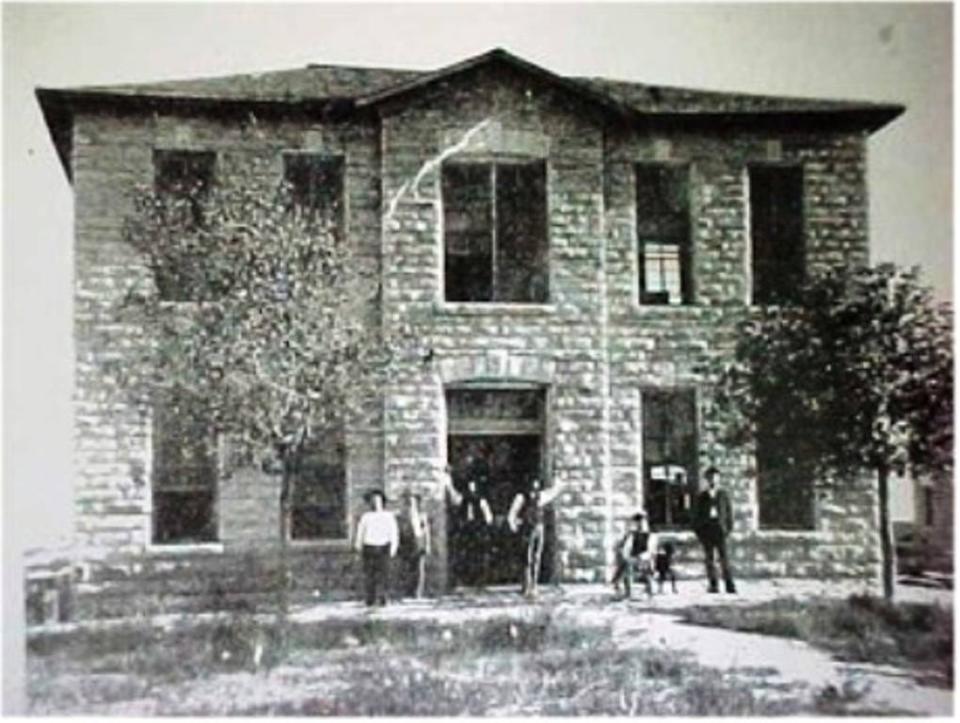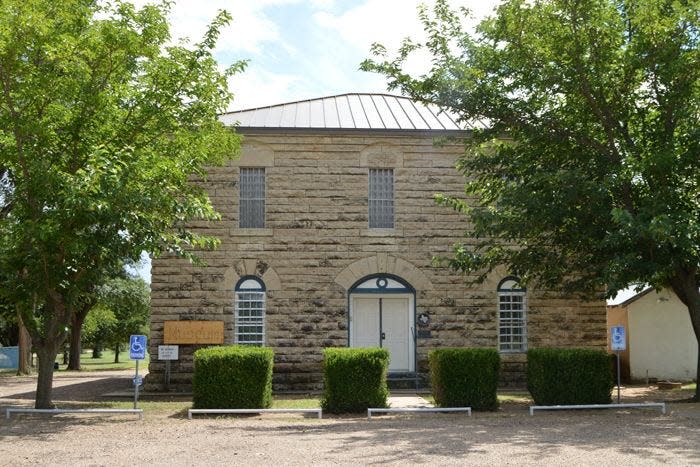Caprock Chronicles: Fort Elliott and Old Mobeetie: The earliest settlements on the Texas Plains, Part 2
- Oops!Something went wrong.Please try again later.
Editor’s Note: Jack Becker is the editor of Caprock Chronicles and is a Librarian Emeritus from Texas Tech University. He can be reached at jack.becker@ttu.edu. Today’s article is the second of a two-part series about Fort Elliott and Old Mobeetie by frequent contributor Chuck Lanehart, Lubbock attorney and award-winning history writer.
In about 1874, a buffalo hunter’s hamlet called Hidetown in what is now Wheeler County was the first indication of civilization on the Texas Plains. With the establishment of nearby Fort Elliott in 1875, Hidetown was transformed into the village of Sweetwater, named after a nearby creek. Settlers cut perhaps 100,000 “pickets,” sticks cut along nearby creeks, to erect rude buildings augmented by adobe bricks, with dirt roofs and floors.

A single frame business house with a plank floor was the proud exception. Businesses establishments included a Chinese laundry, a restaurant, a barber shop, and a large store. Frontier entertainment was provided by three saloons, a dancehall populated by many “dancehall girls” and gamblers, and on the outskirts of town, a brothel known as Feather Hill.
In 1876, one of the town’s saloons was the site of the “Sweetwater Shootout.” Accounts vary, but it seems Fort Elliott soldier Melvin King shot and killed Mollie Brennan, a dancehall girl and former prostitute. King then wounded Mollie’s boyfriend, buffalo hunter Bat Masterson, later a well-known lawman, gambler and writer. Masterson killed King in self-defense.
Other Old West celebrities who visited the town included Billy the Kid, Wyatt Earp and Pat Garrett.
In 1878, dangerous ill will developed in the area, following the arrest of several local ranchers for selling tobacco at cost without having obtained a federal license. The US marshal for the area filed against them in state court for the tax law violation. But the county judge, sympathetic to the locals, released some ranchers on slight bail and dismissed the charges against others.
Outraged, the marshal jailed the judge, the county attorney and the sheriff for obstruction of justice, then rearrested the ranchers.

“The greatest excitement at once was got up in the county,” an observer wrote. Townspeople “armed themselves to the teeth,” and it appeared the marshal would be lynched. Meanwhile, the army got word not to interfere in the matter, so the garrison at Fort Elliott remained neutral.
Eventually, the hotheaded citizenry cooled off, and the ranchers paid their fines. Federal charges against the local officials went nowhere, and the affair terminated without bloodshed.
By 1879, the village was a candidate for an official post office, but another Texas town in Nolan County had already claimed the name “Sweetwater.” Local Native Americans told the town’s prospective postmaster the Indian name for Sweetwater was “Mobeetie,” the US Postal Service approved, and the name stuck. As the legend goes, townspeople later learned Mobeetie translates from English to “buffalo dung” in Cheyenne.

Court activity was brisk in Mobeetie’s Wheeler County Courthouse. Women with colorful names were seldom charged for the crime of prostitution but were constant targets of “vagrancy” prosecutions. Vagrancy laws, also known as “Black Codes,” gave lawmen authority to arrest people defined as “idle,” fine them, and contract their labor if they could not pay the fine.
In Mobeetie, the usual fine for vagrancy was a dollar, and there were more than 100 such cases on the docket between 1884 and 1890. Among the defendants were Belle of Mobeetie, Frog-mouth Annie (so called because she always held a piece of tobacco in her mouth near the corner which kept it stretched. Otherwise she was a fine-looking girl), Little Queen, Little Phoebe, Wild Bill and Spotted Jack (both women).
The girls were described as “always well dressed and generally very pretty.” Dolly Varden, large and unshapely, was not good-looking, but must have had a certain charm. She was sometimes charged by the court as Dolly Butts, as she married Ed Butts. He was prosecuted for living in adultery, vagrancy and professional gambling.

To accommodate alleged vagrants and other outlaws, in 1885 the county spent $25,000 on a magnificent two-story limestone jail, 40 by 36 feet, with walls three feet thick. The first floor provided living space for the sheriff and his family. On the second floor, a hangman’s trap door was installed, though it was never put to use.
The town’s population peaked in 1890 with 400 citizens (other estimates are as great as 1,200 citizens), but when Fort Elliott closed the same year, Mobeetie soon declined. A deadly tornado ripped through the village in 1898, and Wheeler claimed the county seat in 1907.

In 1927, a rail line was built two miles north of the tired old town, which attracted farmers and ranchers, spurring the establishment of New Mobeetie. Old Mobeetie residents moved themselves and their buildings to the new location.
Today, the 1885 Wheeler County Jail — oldest existing jail on the Texas Plains — is the last remnant of Old Mobeetie. The jail — still equipped for executions — is now a museum hosting exhibits chronicling the Old West. Nearby is the original Fort Elliott flagpole. The ghost town of Old Mobeetie is now separated from nearby New Mobeetie by State Highway 152. New Mobeetie has also declined, with an estimated 2019 population of 95 citizens.
This article originally appeared on Lubbock Avalanche-Journal: Caprock Chronicles: Fort Elliott and Old Mobeetie: The earliest settlements on the Texas Plains, Part 2

